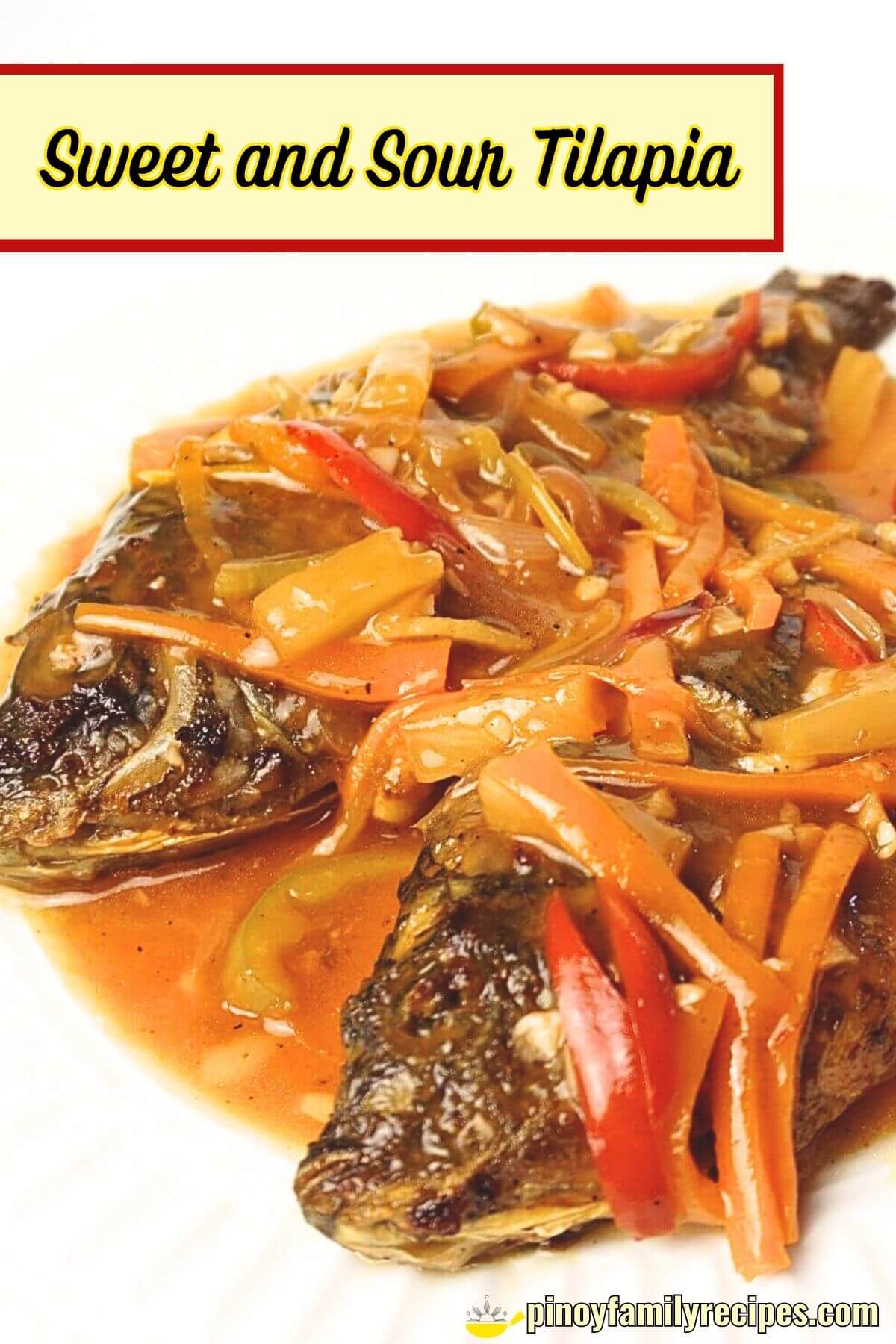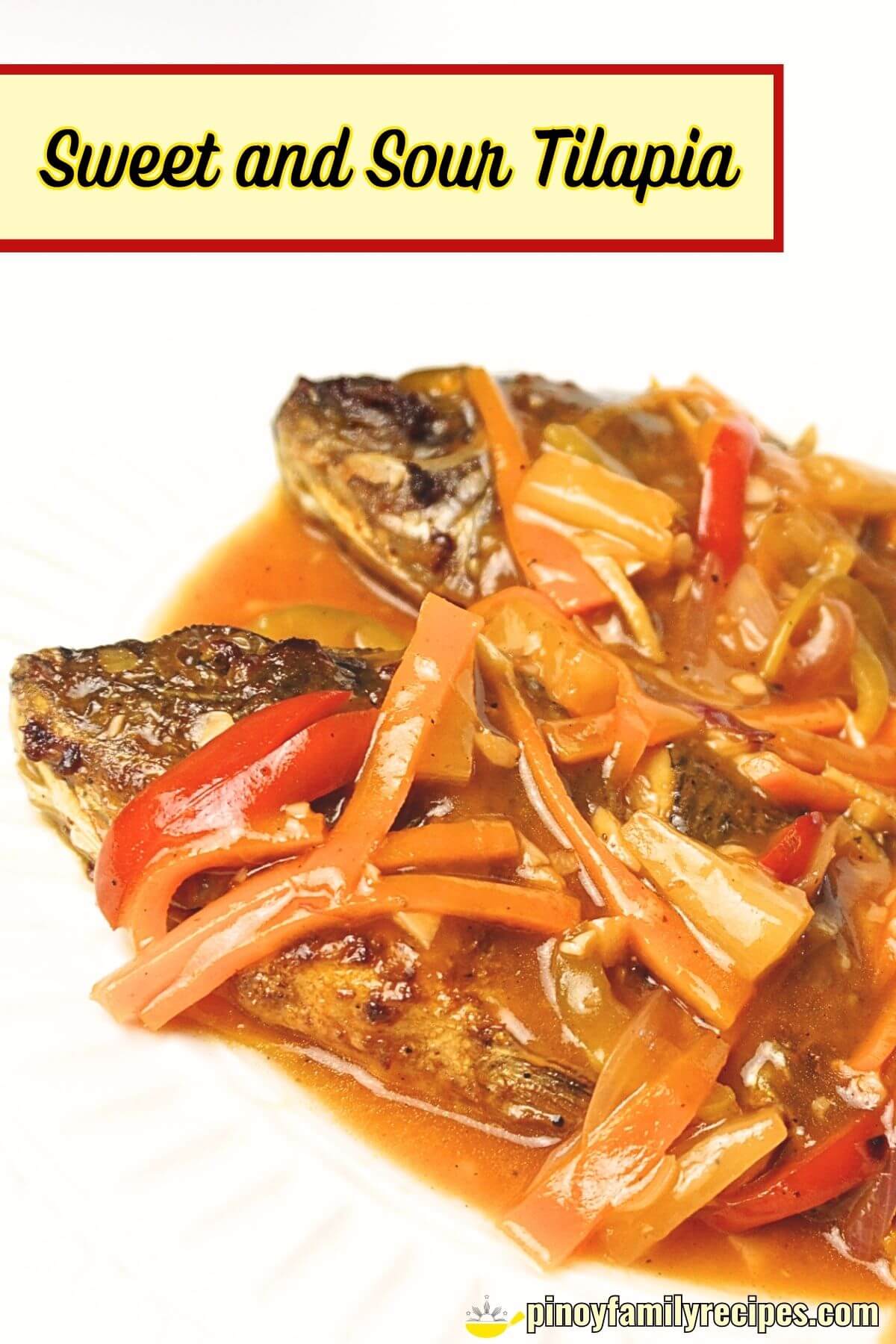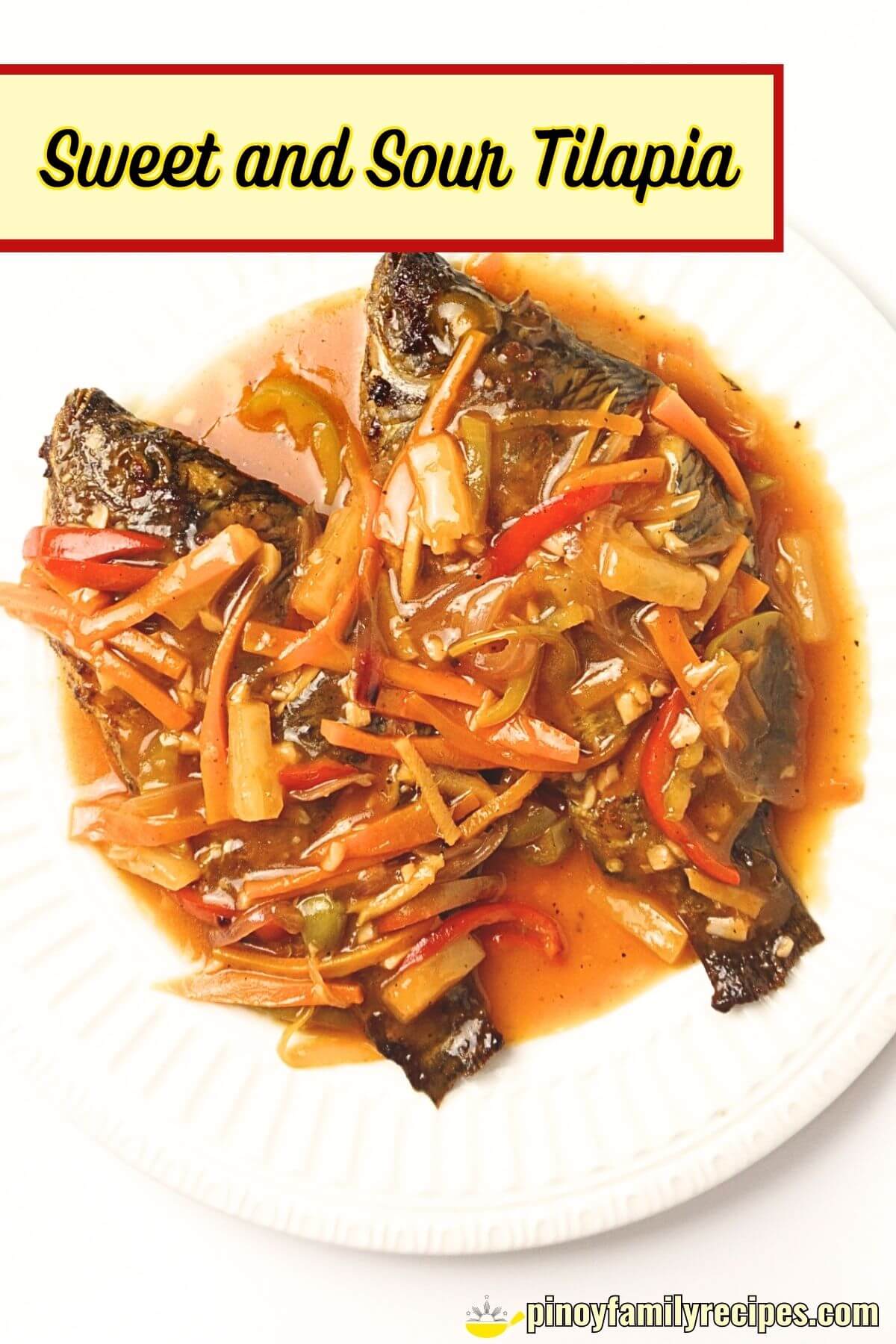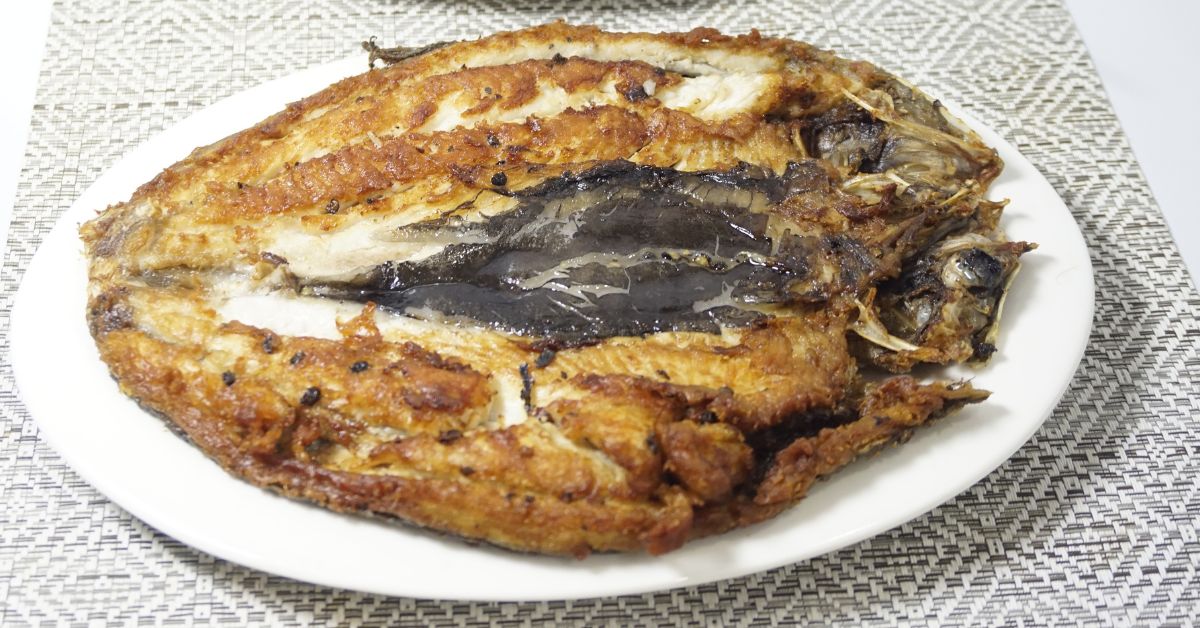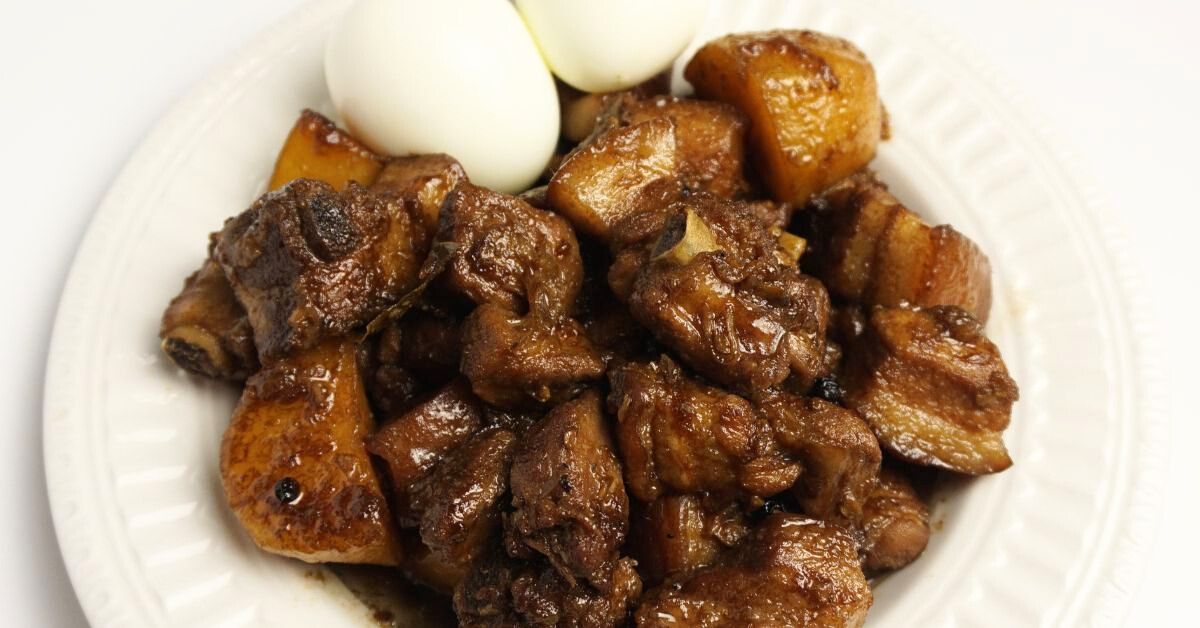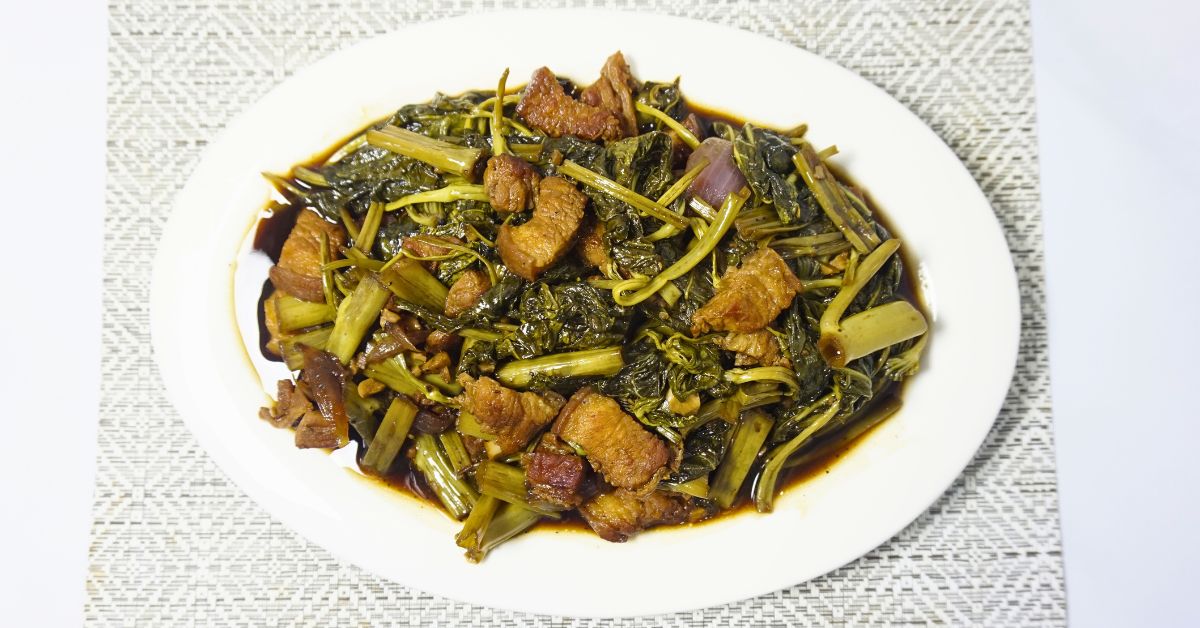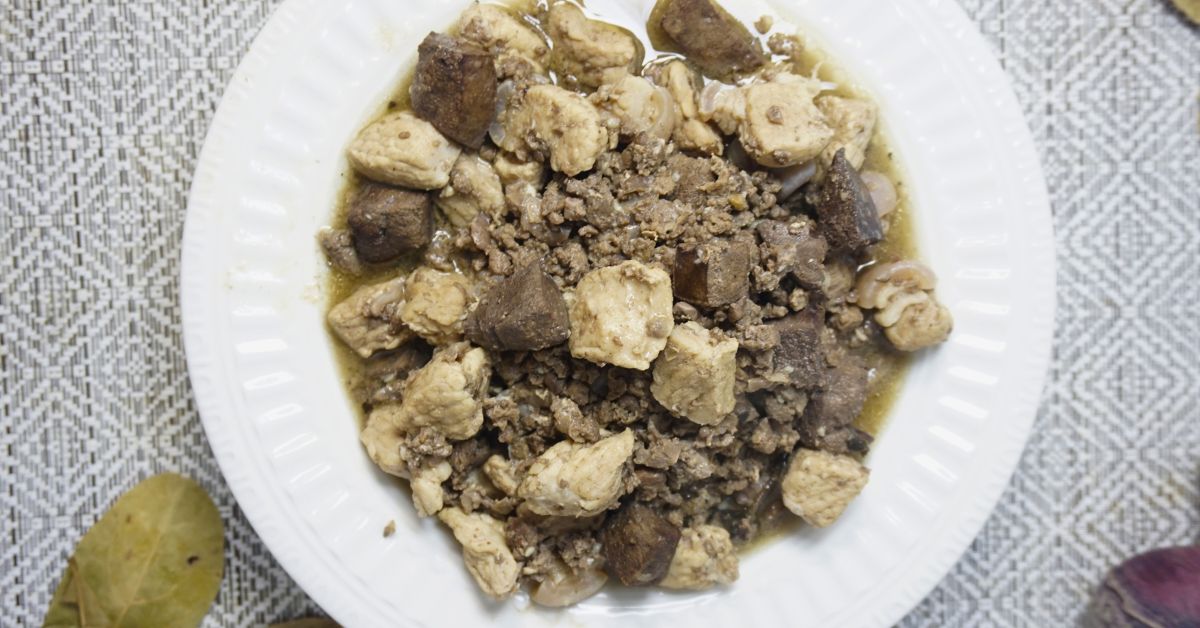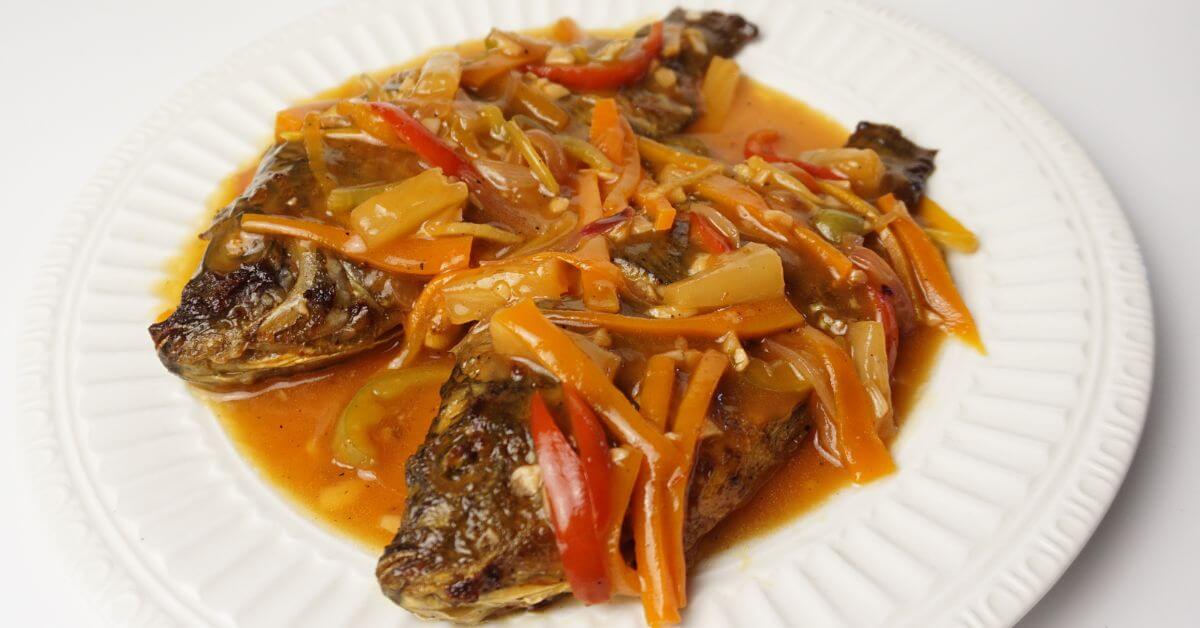
Sweet and sour tilapia or what we call here in the Philippines “escabecheng tilapia” is simply made of fried tilapia with a sweet and tangy sauce made with a mixture of ketchup, sugar and slurry.
The sauce is this cool orangey-red color that makes the whole thing look awesome and makes you want extra rice every time you eat it. It’s that good!
This dish has its roots in Chinese cuisine, but we’ve made it our own.
Sweet and sour tilapia is often served with rice or noodles, and is a popular choice for takeout or dine-in at Chinese restaurants.
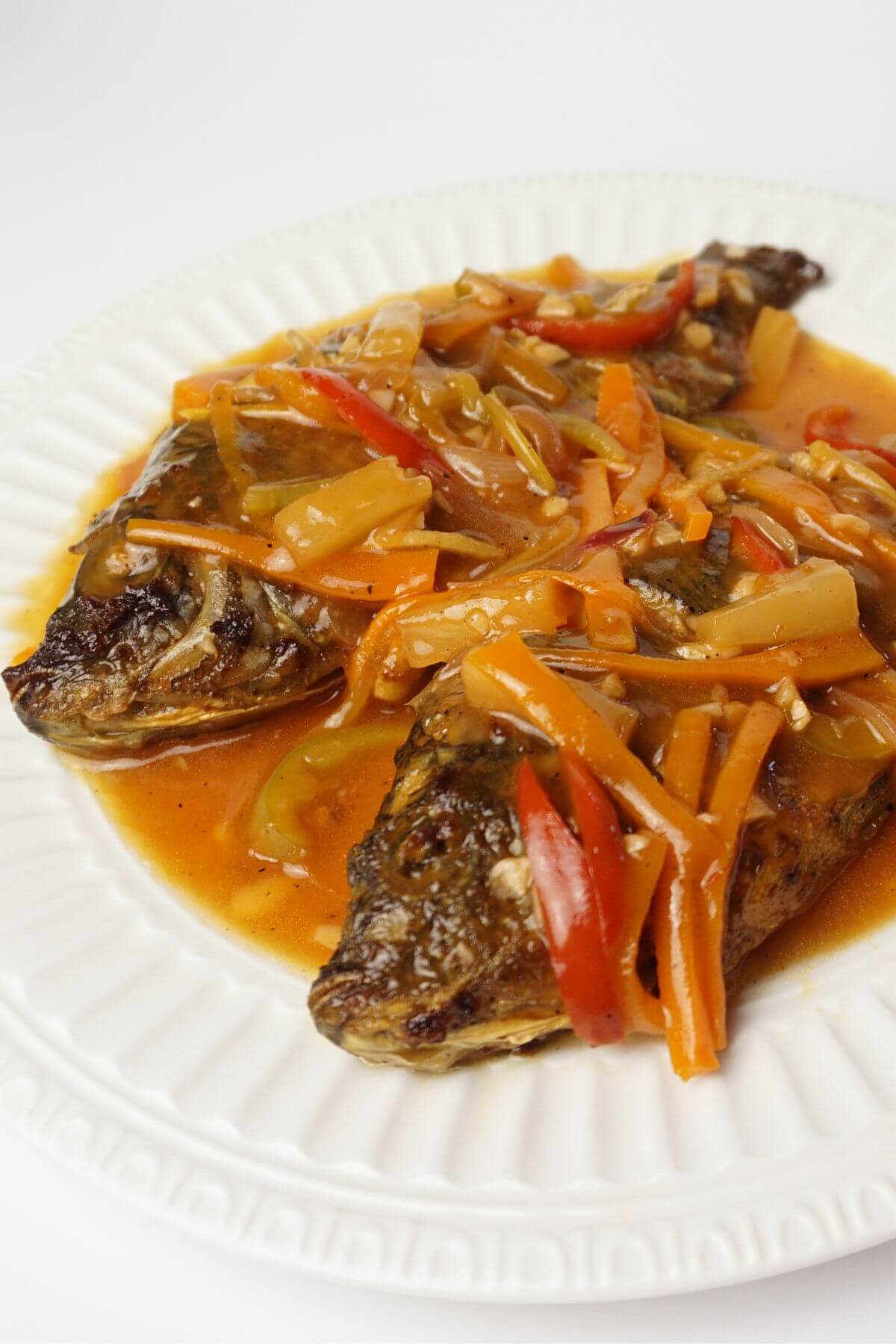
Sweet and Sour Tilapia Ingredients
- Tilapia: The main star! Tilapia is mild and flaky, perfect for soaking up the tasty sweet and sour sauce. It’s like a blank canvas that gets even better with all the flavors.
- Carrots, julienne cut: Thin strips of carrots add color and a nice crunch. They soak up the sauce, giving you a fresh and yummy bite every time.
- Bell pepper: Colorful and crunchy, bell peppers are sweet and juicy. They make the dish look pretty, and their sweet taste goes perfectly with the tangy sauce.
- Pineapple Tidbits: The secret ingredient! Pineapple tidbits bring natural sweetness and a tropical twist. They balance out the savory and tangy parts, making the dish super tasty.
- Ketchup: The unsung hero! Ketchup gives the sauce a rich tomatoey base. It’s the sweet and tangy backbone of the dish that makes it so familiar and comforting.
- Sugar: A bit of sweetness! Sugar makes sure the sweet and sour balance is just right. It rounds out the sauce, making every bite delicious.
- Slurry: The slurry, made with water and cornstarch, thickens the sauce. It helps the sauce stick to the tilapia and veggies, making them extra tasty.
- Salt and pepper: A little salt makes things savory, and pepper adds a tiny kick. Together, they make every bite delicious and satisfying.
- Onion: Cooked onions add a savory depth. They give the sweet and sour sauce a rich flavor and a nice texture that goes well with the tender tilapia.
- Garlic: The smell-good ingredient! Garlic adds a yummy fragrance and a savory kick. It’s the special flavor that brings everything together, making your sweet and sour tilapia super tasty.
- Vinegar: This tangy ingredient adds a sharp acidity to the sweet and sour sauce, balancing out the sweetness from the pineapple and sugar. It provides a zesty kick that enhances the overall flavor profile of the dish, giving it a delightful tanginess that keeps your taste buds tingling for more.
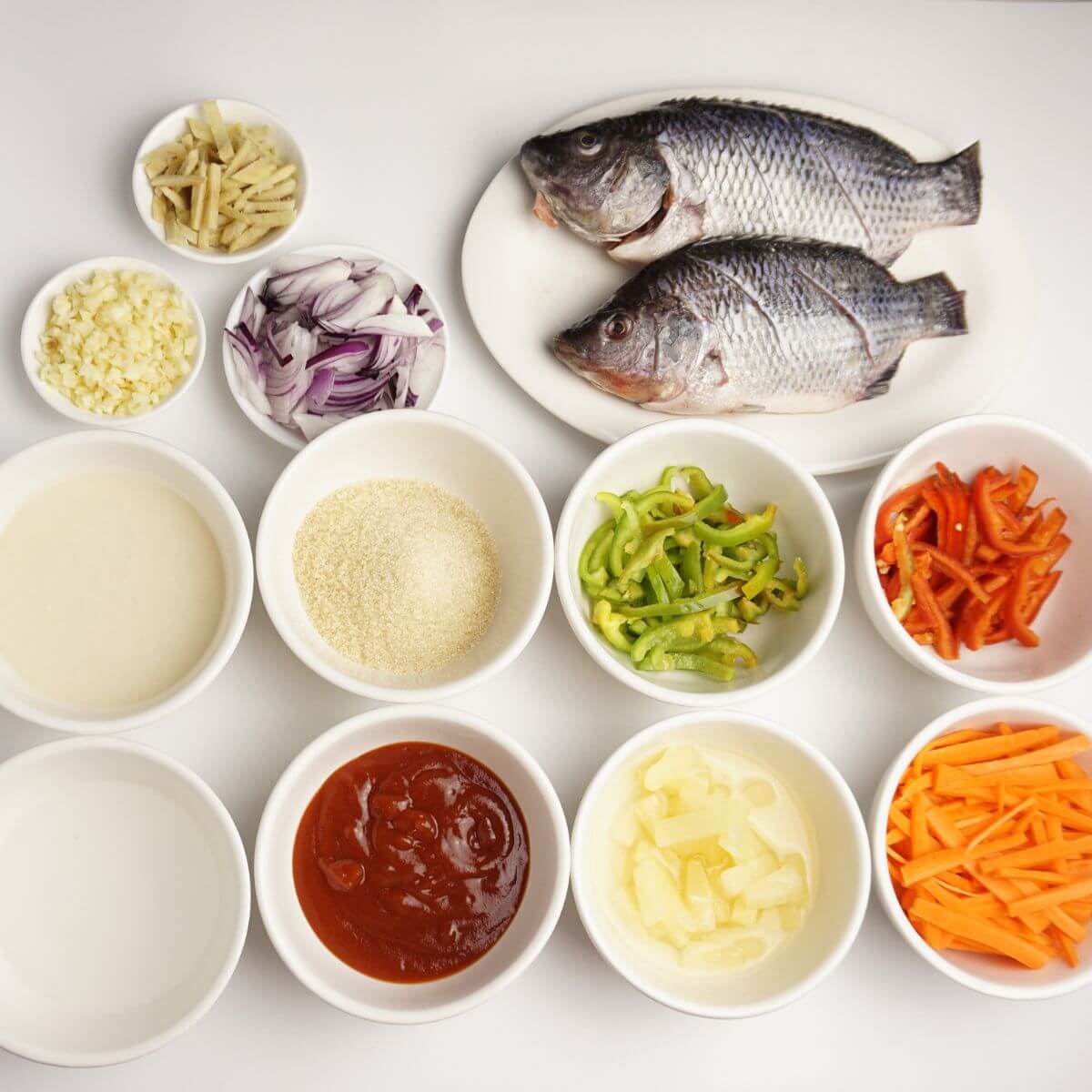
How To Cook Sweet and Sour Tilapia
Get the Tilapia Ready:
Dry the tilapia with a paper towel to make them nice and crispy when we fry them. Sprinkle a bit of salt and pepper on them for extra flavor – it makes the tilapia taste awesome.
Fry the Tilapia:
Put some oil in a pan and heat it up on medium. Fry the tilapia until it’s golden brown and super crispy on the outside. This step makes sure the tilapia is cooked just right.
Cook Onion, Garlic, and Ginger:
After frying the tilapia, heat a pan and cook chopped onion, garlic, and ginger until they release their fragrant aromas and turn slightly golden. This step adds depth and flavor to the sweet and sour sauce, creating a savory base for the dish.
Add Ketchup and Simmer:
Once the onion, garlic, and ginger are cooked, add the ketchup to the pan and let it simmer for one minute. The ketchup provides a rich tomatoey base with a sweet and tangy flavor, which forms the backbone of the sauce.
Incorporate Carrots and Liquid Ingredients:
After simmering the ketchup, add the julienne-cut carrots to the pan. Then, pour in half a cup of water, half a cup of vinegar, and the pineapple juice from the tidbits. Bring the mixture to a boil, allowing the flavors to meld together.
Add Sugar and Pineapple Chunks:
Once the liquid ingredients come to a boil, add the sugar to balance the sweetness and acidity of the sauce. Next, add the pineapple tidbits, which bring natural sweetness and a tropical twist to the dish. Let the mixture simmer for one minute to infuse the flavors.
Incorporate Bell Peppers and Slurry:
Add the bell peppers to the pan and let them simmer for another minute. The bell peppers contribute color, crunch, and sweetness to the dish. Then, add the slurry (a mixture of water and cornstarch) to thicken the sauce, ensuring it coats the tilapia and vegetables beautifully.
Season with Salt and Pepper:
Bring the sauce to a boil once more, then season with salt and pepper to taste. Salt enhances the savory flavors, while pepper adds a hint of heat, making every bite delicious and satisfying.
Serve:
Pour the flavorful sweet and sour sauce over the fried tilapia and serve on a plate. The combination of crispy fish and tangy sauce creates a delightful harmony of flavors. Enjoy your sweet and sour tilapia!
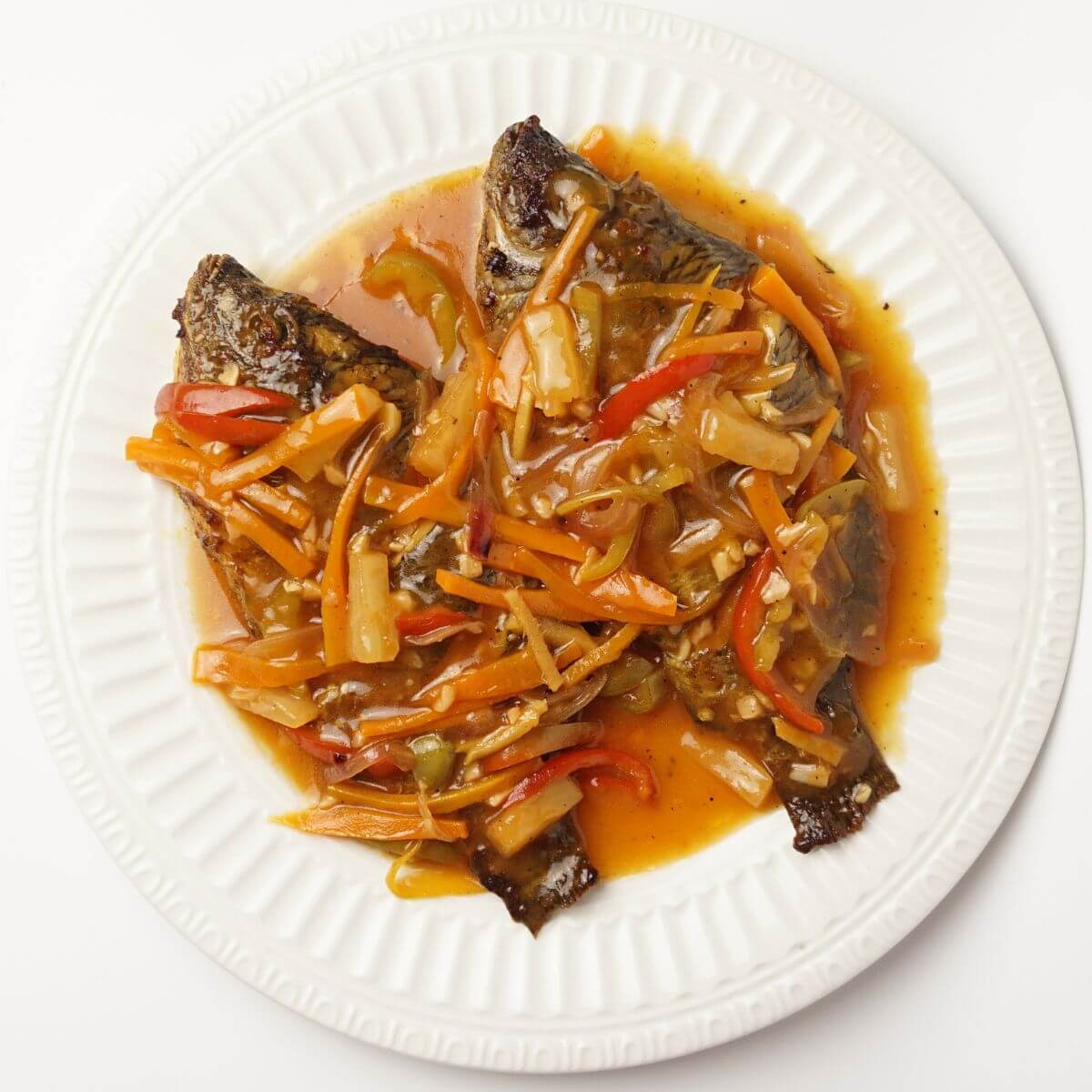
Other Fish Options Best for Sweet and Sour Recipe
If you’re in the mood for a sweet and sour delight but want to switch up the fish, there are plenty of tasty options to consider. Here are a few alternative fish choices that work wonders in sweet and sour recipes:
1. Salmon
Why it works: Salmon is a superstar in the world of sweet and sour. Its rich, buttery taste not only complements but enhances the overall flavor profile. The firm texture of salmon ensures each bite is a perfect blend of succulence and zesty goodness.
2. Snapper:
Why it works: Snapper adds a delightful twist with its mild and slightly sweet flavor. The flaky texture of snapper allows it to soak up the sweet and sour sauce, creating a harmony of tastes that is both satisfying and refreshing.
3. Cod:
If you like it a bit sweet, a pinch of sugar in your Pork Adobo does the trick. It smoothens out the bold soy sauce and vinegar flavors without taking over. It’s a subtle touch that balances the savory and tangy, making each bite a straightforward, tasty experience.
4. Mahi-Mahi:
Why it works: Mahi-mahi brings a meaty texture to the table, standing up to the bold flavors of the sweet and sour sauce. Its slightly sweet taste adds a layer of complexity, making each bite a culinary delight.
5. Trout:
Why it works: Trout introduces a delicate flavor and flaky texture to the sweet and sour mix. The result is a dish that is light, yet full of character, providing a refreshing alternative for those who prefer a subtler fish taste.
FREQUENTLY ASKED QUESTIONS
Handle the tilapia fillets gently when frying or cooking in the sauce to prevent them from breaking apart. Ensure the oil is hot enough before adding the fillets to achieve a crispy exterior that holds together well.
To make Sweet and Sour Tilapia less oily, blot excess oil from the fried fish with paper towels before adding them to the sauce. Use minimal oil when frying and choose leaner cuts of fish to reduce oil absorption.
Tilapia fillets are cooked through when they are opaque and easily flake with a fork. Cook them until the internal temperature reaches 145°F (63°C) for safe consumption.
To prevent the sauce from becoming too watery, ensure that the cornstarch slurry (cornstarch mixed with water) is properly mixed and added to the simmering sauce. Cook the sauce until it thickens to your desired consistency.

Sweet and Sour Tilapia
Ingredients
- 1 cup Cooking Oil (for frying)
- 4 pieces Tilapia medium
- 2 tbsp Cooking Oil (for sauteing)
- 1 piece Ginger thumb-sized (julienne)
- 8 cloves Garlic Minced
- 1 piece Onion medium (chopped)
- ½ cup Ketchup
- 1 piece Carrots small (julienne)
- ½ cup Water
- ½ cup Vinegar
- 1/2 cup Pineapple Juice (from pineapple tidbits)
- 2 tbsp Sugar
- 1 cup Pineapple Tidbits
- 1 Red Bell Pepper medium (julienne)
- 1 Green Bell Pepper medium (julienne)
- 2 tbsp Cornstarch (for slurry)
- Salt and Pepper to taste
Instructions
- On a pan fry the Tilapia until golden brown. Set aside.
- On a pan saute the ginger followed by the garlic and onion.
- Add the ketchup and let it simmer for one minute then add the carrots.
- After one minute add one cup of water, half cup of vinegar and pineapple juice from thetidbits and bring to a boil.
- Upon boiling, add the sugar followed by the pineapple tidbits and let it simmer for one minute.
- Add the bell peppers and let it simmer again for one minute then add the slurry.
- Bring to a boil then add salt and pepper to taste.
- Pour the sauce on top of the fish and serve on a plate. Enjoy!
Watch this!
Notes
- Adjust the amount of vinegar and sugar according to your preference for sweetness and tanginess.
- Ensure the cornstarch slurry is well mixed before adding it to the sauce to avoid clumps.
